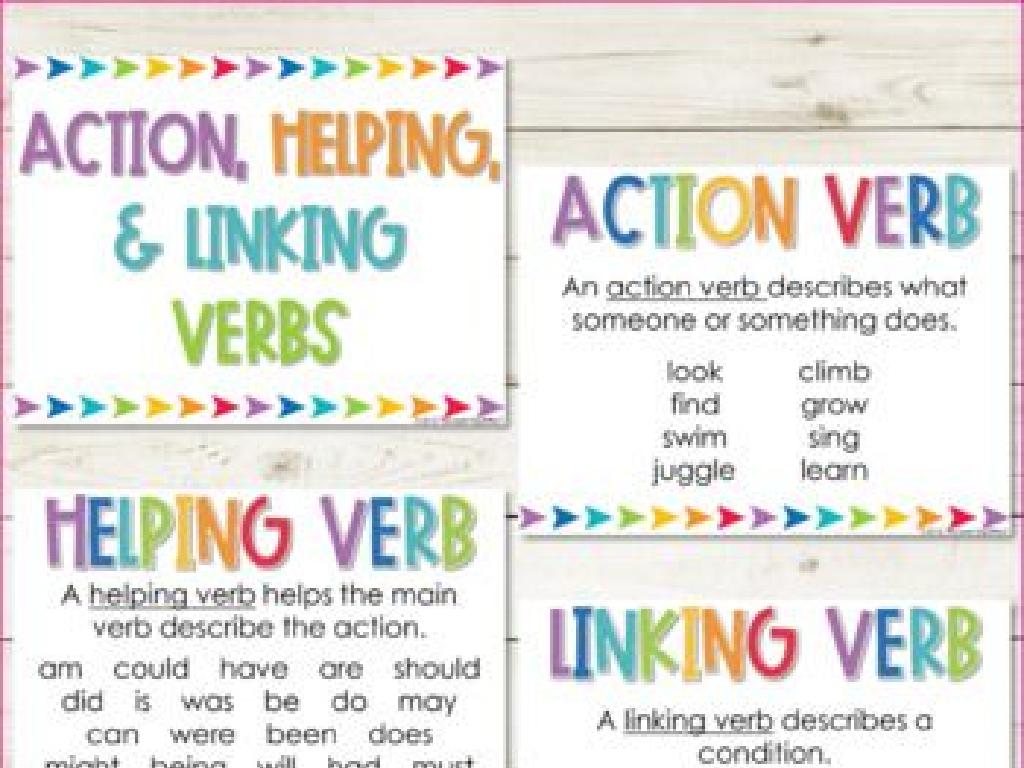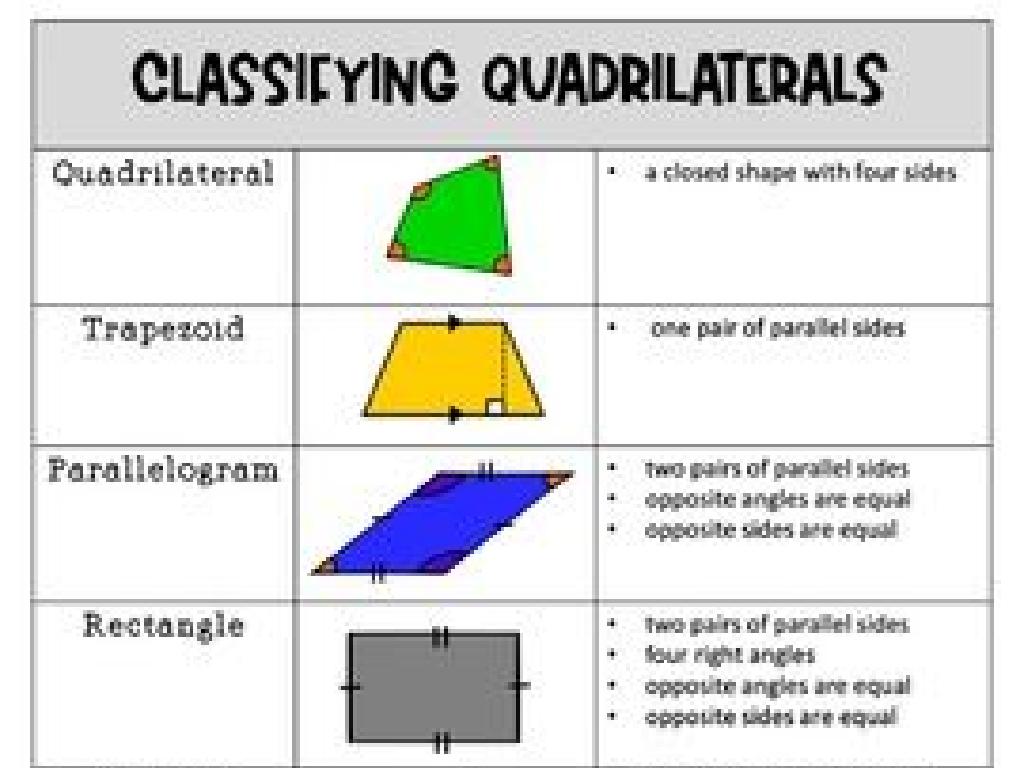Multiply Two Fractions Using Models
Subject: Math
Grade: Seventh grade
Topic: Operations With Fractions
Please LOG IN to download the presentation. Access is available to registered users only.
View More Content
Multiplying Fractions: A Visual Approach
– Recap: What are fractions?
– Fractions represent parts of a whole.
– Daily life applications
– Used in cooking, budgeting, and time management.
– Visualizing fraction multiplication
– Use models like grids or circles to illustrate.
– Steps to multiply fractions
|
Begin with a brief review of fractions, ensuring students recall that fractions represent parts of a whole and can be visualized as such. Highlight the relevance of fractions in everyday scenarios such as cooking (recipes), budgeting (dividing money), and managing time (hours in a day). Introduce visual models like grids or pie charts to demonstrate the concept of multiplying fractions, which helps in understanding how the parts of two wholes combine. Walk through the steps: multiply the numerators to get the new numerator, and multiply the denominators for the new denominator. Emphasize that models are a powerful tool for grasping the multiplication of fractions before moving on to abstract calculations.
Visualizing Fractions with Models
– Understanding fraction models
– A visual representation of fractions
– Exploring types of models
– Area, set, and number line models
– Using models to multiply
– Visualize multiplying fractions step by step
– Benefits of visual learning
|
This slide introduces students to the concept of fraction models as a tool for visualizing the multiplication of fractions. Begin by explaining that a fraction model is a visual way to represent fractions, which can make abstract concepts more concrete. Discuss different types of models such as area models (like shaded grids), set models (like groups of objects), and number line models. Demonstrate how these models can be used to represent the multiplication of two fractions by showing the overlapping regions or intersections. Emphasize the importance of visual learning in understanding mathematical concepts, especially for complex operations like multiplying fractions. Provide examples and encourage students to draw their own models to practice.
Multiplying Fractions – Understanding the Concept
– Meaning of fraction multiplication
– Multiplying fractions combines parts of wholes, like half a pizza times another half.
– Difference from whole number multiplication
– Unlike whole numbers, multiplying fractions can result in a smaller number.
– Real-life examples of fraction multiplication
– Cooking recipes often require half of a ¾ cup ingredient, which involves fraction multiplication.
– Visualizing with fraction models
|
This slide introduces the concept of multiplying fractions, aiming to clarify that unlike multiplying whole numbers, which results in a larger number, multiplying fractions often results in a smaller number because we are combining parts of wholes. Use visual aids like fraction models to demonstrate how one-half of a pizza multiplied by another half results in one quarter of the pizza. Provide real-life scenarios such as cooking, where multiplying fractions is necessary, to make the concept relatable. Encourage students to visualize and draw models to understand the multiplication of fractions better.
Multiplying Fractions with Models
– Visualize fractions using models
– Use shapes or grids to represent fractions before multiplying
– Multiply the numerators
– The top numbers of the fractions get multiplied together
– Multiply the denominators
– The bottom numbers of the fractions get multiplied together
– Simplify the resulting fraction
– Reduce the fraction to its simplest form if possible
|
This slide provides a step-by-step guide for multiplying two fractions using models, aimed at seventh-grade students. Begin by visualizing each fraction with a model, such as shaded grids or circles, to provide a concrete understanding of the fractions involved. Next, guide students to multiply the numerators (top numbers) to find the new numerator. Then, multiply the denominators (bottom numbers) to find the new denominator. Lastly, simplify the fraction if needed by finding the greatest common divisor and dividing both numerator and denominator by it. Encourage students to practice with different sets of fractions and to use visual models to confirm their answers. This method helps in understanding the concept of multiplication of fractions deeply and visually.
Multiplying Fractions Using Area Models
– Area models for fraction multiplication
– Visualize fractions as areas to see the product
– Interpret product with models
– Understand the result of multiplication
– Example: Multiply 1/2 by 3/4
– 1/2 shaded area multiplied by 3/4 shaded area
|
This slide introduces the concept of multiplying fractions by using area models, which helps students visualize the process. Start by explaining that an area model represents fractions as parts of a square or rectangle. Then, show how to multiply fractions by shading the areas that represent each fraction and finding the overlap. For the example, draw a rectangle, divide it into halves, shade one half, then divide the same rectangle into fourths and shade three parts. The overlapping shaded area represents the product of 1/2 and 3/4. Encourage students to draw their own models and practice with different fractions to solidify their understanding.
Fraction Multiplication Practice
– Multiply 2/3 by 4/5 together
– Visualize with a grid or area model
– Try 5/8 by 1/4 individually
– Use a model to find the product
– Share your models and solutions
– Explain your reasoning to the class
– Discuss different methods used
– Compare and learn from each other
|
This slide is aimed at providing students with practice problems to reinforce their understanding of multiplying fractions using models. Start by solving 2/3 multiplied by 4/5 as a class, guiding students through the process of visualizing the problem with a grid or area model. Then, assign the problem of 5/8 multiplied by 1/4 for students to try independently, encouraging them to use a similar modeling approach. Afterward, create an interactive session where students share their models and answers, explaining their reasoning. This will not only help them articulate their thought process but also expose them to different methods of solving the problem. Encourage students to discuss and compare the various approaches to deepen their understanding of the concept.
Class Activity: Fraction Multiplication Models
– Create a model for fraction multiplication
– Choose two fractions to multiply
– Build your model using materials
– Use paper, colors, or objects to represent fractions
– Present your model to the class
– Explain how your model shows the product
|
This activity is designed to help students visualize the process of multiplying fractions. Provide students with various materials such as colored paper, fraction circles, or other objects that can represent fractions. Students should select two fractions of their choice and create a physical model that demonstrates how to multiply these fractions. Encourage creativity and ensure they understand that the area of the overlapped sections represents the product of the multiplication. Once completed, each student will present their model to the class, explaining the steps they took and how the model represents the multiplication process. Possible variations of the activity could include using digital tools to create the models, working in pairs, or challenging students to find real-life applications of multiplying fractions.
Review and Reflect: Multiplying Fractions
– Recap on multiplying fractions
– Reviewed how to multiply fractions using models and calculations.
– Applying knowledge in real-life
– Use this method in cooking, crafting, or dividing resources.
– Open Q&A session
– Clarify doubts and explore further applications.
|
This slide aims to consolidate the day’s learning on multiplying fractions. Begin by summarizing the steps to multiply fractions using models, ensuring students understand both the visual and mathematical process. Discuss practical applications, such as adjusting recipes or splitting materials in projects, to show the relevance of this skill in everyday life. Finally, encourage an open discussion where students can ask questions or express concerns, allowing for peer learning and teacher guidance. This reflection time is crucial for assessing understanding and reinforcing the day’s lesson.






